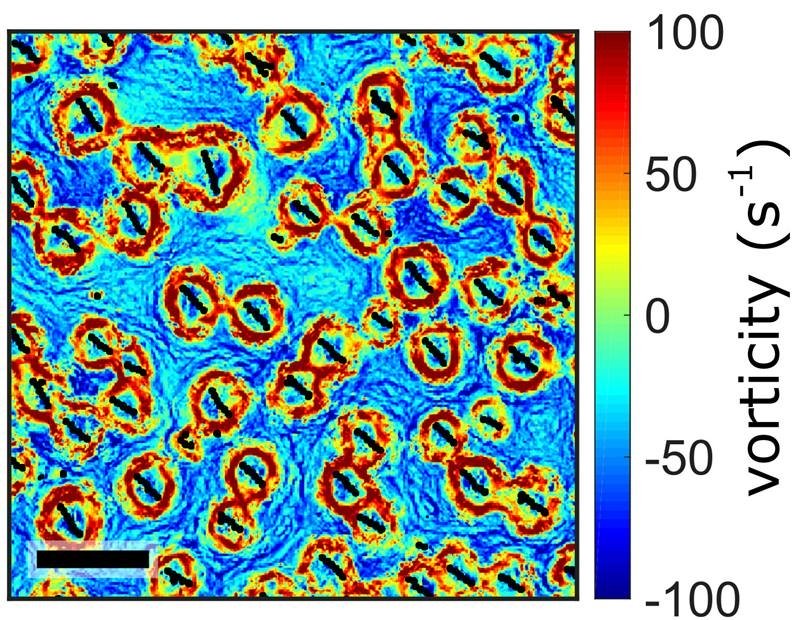The Science
In self-assembly, components come together into a material all at once rather than one at a time. In active self-assembly, energy in the system or its environment fuels the process. Both the assembly process and the behavior of the resulting formed material can be directed by outside forces and by the material itself. In this research, scientists used a magnetic field to make metal particles spin at the liquid interface. This spinning activity created swarms of rod-like particles that then formed vortices. These vortices assembled into dynamic lattice structures that are reconfigurable and capable of self-healing behavior. These lattices also can be directed to transport embedded inert cargo particles.
The Impact
Active particle suspensions are a class of materials with tunable properties. This new research provides insight into fundamental aspects of the dynamics of such systems that act collectively. It also yields new tools for particle manipulation at the microscale to create new types of robotic systems. For example, these materials could transport embedded cargo particles and could be remotely tuned to introduce and mix substances as needed. This makes these systems promising candidates for water purification.
Summary
Self-assembly is used to form materials for use in applications such as the conversion of solar energy into electricity. However, many of these materials are static and cannot be easily altered, if at all. A new type of self-assembly permits tuning of material assembly and properties. This process continuously uses external energy to assemble the materials. Materials formed by this process are considered “active” and their structure can be adjusted in response to changing conditions or new functional requirements.
Scientists explored active self-assembled spinning particles emerging at liquid interfaces when a suspension of magnetic particles was energized by a rotating magnetic field. Their collective interactions promoted formation of dynamic two dimensional lattice structures with increasing spinner density. These lattices are capable of self-healing behavior. When damaged, strong differences in the surface flows of the liquid between the damaged and ordered regions resulted. This caused spinners from the ordered region to move into the damaged region and restore the dynamic structure of the lattice. Also, the strong underlying spinner induced flows can be remotely tuned by changing the applied magnetic field. This allowed the lattice of synchronized spinners to facilitate and manipulate transport of passive cargo particles.
Funding
This research was supported primarily by the Department of Energy Office of Science, Office of Basic Energy Sciences, Materials Sciences and Engineering Division. Two of the study’s authors acknowledge financial support from the Deutsche Forschungsgemeinschaft (DFG).




